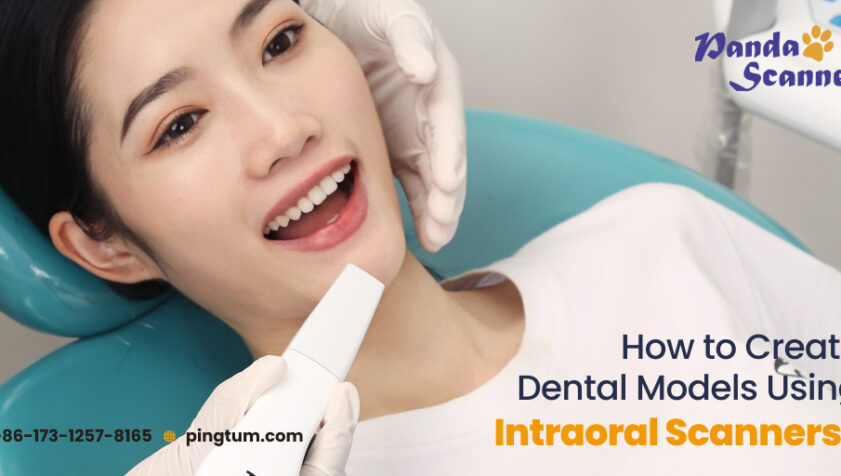Aligners, retainers, dentures, bridges, and splints are very important dental solutions that help patients by giving support or working as a replacement for a broken or missing tooth. So, without the mention of these, the world of dentistry remains incomplete. Now, to create these solutions traditional dentistry involved an elongated process. In digital dentistry, however, the process has been made shorter, but it is not devoid of steps, so you need to know how these are designed using the intraoral scanners. First of all, to create such models, impressions of patients’ buccal cavities must be obtained first, and then 3D prints must be crafted and procured. To help you understand how 3D printing models are crafted using Panda intraoral scanners, we have explained the process in detail.
Physical and Digital Impression- What’s the Difference?
In traditional dentistry, dentists used alginate materials to make restorative models for fixing a broken or missing tooth. The process was tedious, time-consuming, and inconvenient for patients. This is because the patients are required to hold the gummy material in their mouths to give the impressions. This method subjected the patients to the risk of gagging, choking, and swallowing the material. Further, in this process, there is a high chance that the impressions will come out inaccurately the first time, and therefore the dentist will need to repeat the process again, forcing the patient to go through the ordeal another time. Thus, patients tend to be anxious to give impressions when they have to undergo the traditional impression process.
On the other hand, the digital process of obtaining an oral cavity impression is simple and comfortable. The dentists can create a digital model with the help of the Panda intraoral scanners. Intraoral scanners are devices that emit light on the area that needs to be scanned, and the sensor at this point captures many images that are required to prepare a 3D digital model. These scanned images are then sent to the laboratory, where the restorative dental solutions are prepared. Since intraoral scanners are very fast at procuring dental impressions in comparison to digital dentistry, the latter helps to save costs because the chair time is reduced. Further, the digital impression system is simple, easy, and comfortable for patients. And most importantly, dentists are not required to store and send the physical impression models to the laboratory; they can send them via email.

Step-by-Step Digital Process to Prepare Dental Models
The 3D dental scanners can do 3D printing of crowns, aligners, dentures, splints, and bridges. And this is done in four steps. Let’s take a look at the steps.
Step 1
Scanning
Multiple photos of the intraoral cavity must be captured with the help of a dental intraoral scanner, or scans can be obtained of a physical model with the help of a desktop scanner.
Step 2
Designing
Thereafter, in the next step in digital dentistry, the scanned images are transferred to a computer, where the CAD software processes the same, and the latter builds the model according to the dimensions and specifications.
Step 3
Printing
After designing the model of the broken tooth, the digital files are transferred to a 3D printer for printing purposes.
Step 4
Preparation
Next, once the 3D printing of the dental model is complete, the model should be washed and dried, and then it is fitted into the patient’s mouth.
Conclusion
The modeling process can be completed very quickly with the help of 3D printing using 3D dental scanners, and it also helps to reduce the cost associated with the process. Initially, working with CAD may appear to be intimidating and challenging, but with a little training, dental practitioners and lab assistants can easily operate it. Plus, not only it will make the process easier for dentists to handle, but also, every dentist will find that they can deliver a superior experience, and gain more patient footfall to their clinic.






